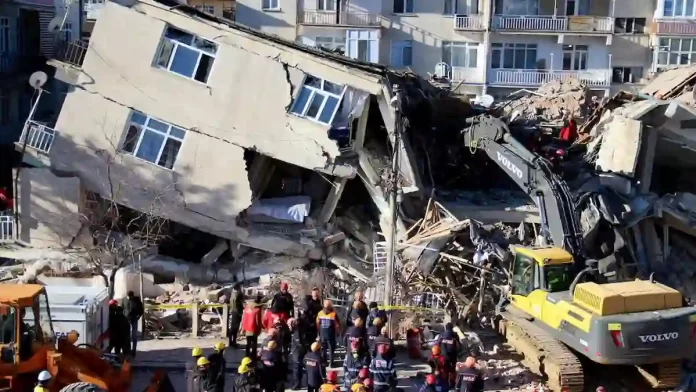Turkey-Syria region has been struck by powerful earthquakes measuring 7.8 on the Richter scale claiming lives of thousands of people and causing widespread damage and panic.
While earthquakes are a common occurrence in Turkey, this one has raised concerns about the potential for further seismic activity in the region.
In this article, we will discuss the reasons behind earthquakes in Turkey and the geological factors that make the region particularly susceptible to seismic activity.
The Earth’s crust is made up of large plates that are in constant motion. When two plates collide or grind against each other, it creates a large amount of energy that is released as earthquakes.
Turkey is located at the crossroads of two major tectonic plates, the African and the Eurasian plates, which makes it one of the most seismically active regions in the world.
The country is situated on the North Anatolian Fault, which is a major fault line that runs through the western part of the country and is responsible for many of the earthquakes that occur in Turkey.
Another reason for the high frequency of earthquakes in Turkey is the presence of several active fault lines in the region.
The Marmara Sea region, for example, is home to several active fault lines that have been responsible for several devastating earthquakes in the past, including the 1999 İzmit earthquake, which had a magnitude of 7.6 and resulted in more than 17,000 fatalities.
The geology of Turkey also plays a role in the frequency of earthquakes in the region. The country is located on a geological plate boundary, which is a region where the Earth’s crust is undergoing significant stress and strain.
This geological plate boundary, combined with the presence of several active fault lines, creates a high potential for seismic activity in Turkey.
Human activities can also contribute to earthquakes. The extraction of oil and gas, as well as the construction of large dams and other infrastructure projects, can cause changes in the Earth’s crust that can trigger earthquakes.
The construction of large dams, in particular, has been linked to increased seismic activity in several parts of the world, including Turkey.
In recent years, there has been a significant increase in the number of earthquakes in Turkey.
This increase has been attributed to several factors, including a rise in human activities such as the construction of large dams and the extraction of oil and gas, as well as an increase in the frequency of large earthquakes in the region.
The increased frequency of earthquakes has led to concerns about the potential for further seismic activity in Turkey, which could have devastating consequences for the country and its people.
To mitigate the risks associated with earthquakes in Turkey, it is important for the government and the public to take steps to prepare for and respond to seismic activity.
This includes implementing building codes and regulations that are designed to reduce the risk of damage and loss of life in the event of an earthquake, as well as investing in disaster response and recovery programs.
In conclusion, Turkey is a seismically active region that is located at the crossroads of two major tectonic plates and is home to several active fault lines.
The country’s geology, combined with human activities such as the construction of large dams and the extraction of oil and gas, has contributed to an increase in the frequency of earthquakes in Turkey.
To reduce the risks associated with earthquakes in the region, it is important for the government and the public to take steps to prepare for and respond to seismic activity.
